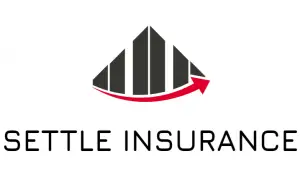“This post may contain affiliate links, if you click a link we may earn a commission if you purchase from that merchant.”
Car insurance is not just a legal requirement in most states, it is also essential for protecting yourself and others on the road. Accidents can happen at any time, and without proper insurance coverage, you could be left with significant financial burdens. Car insurance provides a safety net that can help cover the costs of repairs, medical expenses, and legal fees in the event of an accident or theft.
Table of Contents
Key Takeaways
- Car insurance coverage is important for protecting yourself and others on the road.
- Minimum coverage requirements vary by state and may not provide enough protection in the event of an accident.
- Only having minimum coverage can leave you vulnerable to financial and legal consequences.
- Factors like age, driving record, and location can affect your auto insurance rates.
- Comprehensive coverage offers the most protection and peace of mind, but may come at a higher cost.
Understanding Minimum Coverage Requirements
Each state has its own minimum coverage requirements for car insurance. These requirements vary depending on factors such as the state’s laws and regulations, as well as the level of risk associated with driving in that particular state. Minimum coverage typically includes liability insurance, which covers damages to other people’s property or injuries they may sustain in an accident that you are at fault for.
The Risks of Only Having Minimum Coverage
While having minimum coverage may meet the legal requirements, it may not be enough to cover all damages in an accident. If you are involved in a serious accident where the damages exceed your coverage limit, you could be held personally responsible for any costs beyond that limit. This could result in significant financial hardship and even bankruptcy.
Factors That Affect Auto Insurance Rates
Several factors can impact your auto insurance rates. Your driving record plays a significant role in determining your rates – if you have a history of accidents or traffic violations, you are considered a higher risk and will likely pay higher premiums. Your age and location can also affect your rates, as certain demographics and areas may have higher accident rates. Additionally, the type of car you drive and your credit score may also be factors that insurance companies consider when determining your rates.
The Different Types of Car Insurance Coverage
There are several types of car insurance coverage available to drivers. Liability insurance is the most basic type and is required by law in most states. It covers damages to other people’s property or injuries they may sustain in an accident that you are at fault for. Collision insurance covers damages to your own vehicle in the event of an accident, regardless of who is at fault. Comprehensive insurance covers damages to your vehicle that are not caused by a collision, such as theft, vandalism, or natural disasters. Personal injury protection covers medical expenses and lost wages for you and your passengers in the event of an accident.
The Benefits of Comprehensive Coverage
Comprehensive coverage offers a wide range of benefits that can provide additional peace of mind and financial security. It can protect against theft, vandalism, and natural disasters, which are risks that are not covered by liability or collision insurance. Comprehensive coverage can also cover damages from hitting an animal or falling objects, which can cause significant damage to your vehicle.
Navigating the Claims Process with Adequate Coverage
Having adequate coverage can make the claims process smoother and less stressful. When you have comprehensive coverage, you can file a claim with your insurance company and they will guide you through the process. They will assess the damages, provide an estimate for repairs or replacement, and handle the payment directly with the repair shop or dealership. This can save you time and effort in dealing with the aftermath of an accident.
Taking Advantage of Car Insurance Discounts
Many insurance companies offer discounts for safe driving, multiple policies, and more. By taking advantage of these discounts, you can lower your insurance rates and potentially save hundreds of dollars each year. Some common discounts include safe driver discounts for maintaining a clean driving record, multi-policy discounts for bundling your car insurance with other types of insurance such as homeowners or renters insurance, and good student discounts for students who maintain a certain GPA.
The Real Cost of Accidents with Minimum Coverage
Accidents can be expensive, and minimum coverage may not be enough to cover all costs. If you are involved in a serious accident where there are significant damages or injuries, the costs can quickly add up. Medical expenses, property damage, and legal fees can all be substantial, and if your coverage limit is not enough to cover these costs, you could be left with significant out-of-pocket expenses. This can have a long-lasting impact on your financial well-being and may even result in bankruptcy.
Final Thoughts: Investing in Your Car and Your Safety with More Than Minimum Coverage
Investing in more than minimum coverage is not just about meeting legal requirements – it is about protecting yourself, your vehicle, and your financial security. By choosing a comprehensive insurance policy that covers a wide range of risks, you can have peace of mind knowing that you are protected in the event of an accident or theft. It’s important to consider your individual needs and risks when choosing car insurance coverage. While it may be tempting to opt for the minimum coverage to save money in the short term, the potential long-term costs and risks far outweigh any initial savings. By investing in more than minimum coverage, you are investing in your car and your safety on the road.
If you’re interested in learning more about the importance of having adequate insurance coverage, you might also find our article on “The Basics of Car Insurance” helpful. This article provides a comprehensive overview of the different types of car insurance coverage and explains why minimum coverage may not be enough to protect you in case of an accident or other unforeseen events. Check it out here.
FAQs
What is minimum coverage for car insurance?
Minimum coverage for car insurance is the minimum amount of insurance coverage required by law in your state. It typically includes liability coverage for bodily injury and property damage.
Why is minimum coverage not enough?
Minimum coverage may not be enough to cover the costs of damages or injuries in the event of an accident. If the damages or injuries exceed your coverage limits, you may be responsible for paying the difference out of pocket.
What are the risks of having only minimum coverage?
The risks of having only minimum coverage include financial liability for damages or injuries that exceed your coverage limits, as well as potential legal consequences if you are found to be at fault for an accident.
What additional coverage options are available?
Additional coverage options include collision coverage, comprehensive coverage, uninsured/underinsured motorist coverage, and personal injury protection. These options can provide additional protection and peace of mind in the event of an accident.
How do I determine how much coverage I need?
The amount of coverage you need depends on a variety of factors, including the value of your car, your personal assets, and your risk tolerance. It is recommended that you speak with an insurance agent to determine the appropriate amount of coverage for your specific situation.



































